COVID-19 Vaccines and Immune Response
A special issue of Vaccines (ISSN 2076-393X). This special issue belongs to the section "COVID-19 Vaccines and Vaccination".
Deadline for manuscript submissions: closed (29 February 2024) | Viewed by 38391
Special Issue Editors
Interests: coronaviruses; MERS-COV; SARS-COV-2; animal models; zoonoses; antiviral
Interests: immunology
Interests: pharmacy; life sciences; medicine; drug innovation; thrombosis and hemostasis
Special Issue Information
Dear Colleagues,
The COVID-19 pandemic is still ongoing and continues to represent a huge threat to global public health and prosperity around the world. Vaccination constitutes one of our most powerful tools in curbing this pandemic and has allowed us to return to a somewhat normal lifestyle. On the other hand, the vaccination strategy is continuously evolving regarding the number of recommended administrations or the recent introduction of bivalent vaccines. This Special Issue aims to describe recent findings in terms of vaccine response, in light of the evolution of vaccination strategy. Particular attention will be given to articles (original research articles, reviews or commentaries) assessing the immune response in innovative ways, such as the T-cell response, new in vitro or cell-based assays. Studies on populations characterized by lower serological responses (hematological malignancies, transplanted people, immunsuppressed patients, etc.) are especially encouraged.
Dr. Abdullah Algaissi
Jean-Louis Bayart
Dr. Julien Favresse
Dr. Jonathan Douxfils
Guest Editors
Manuscript Submission Information
Manuscripts should be submitted online at www.mdpi.com by registering and logging in to this website. Once you are registered, click here to go to the submission form. Manuscripts can be submitted until the deadline. All submissions that pass pre-check are peer-reviewed. Accepted papers will be published continuously in the journal (as soon as accepted) and will be listed together on the special issue website. Research articles, review articles as well as short communications are invited. For planned papers, a title and short abstract (about 100 words) can be sent to the Editorial Office for announcement on this website.
Submitted manuscripts should not have been published previously, nor be under consideration for publication elsewhere (except conference proceedings papers). All manuscripts are thoroughly refereed through a single-blind peer-review process. A guide for authors and other relevant information for submission of manuscripts is available on the Instructions for Authors page. Vaccines is an international peer-reviewed open access monthly journal published by MDPI.
Please visit the Instructions for Authors page before submitting a manuscript. The Article Processing Charge (APC) for publication in this open access journal is 2700 CHF (Swiss Francs). Submitted papers should be well formatted and use good English. Authors may use MDPI's English editing service prior to publication or during author revisions.
Keywords
- SARS-CoV-2
- Omicron
- vaccines
- immunogenicity
- T-cell
- B-cell
- neutralization






